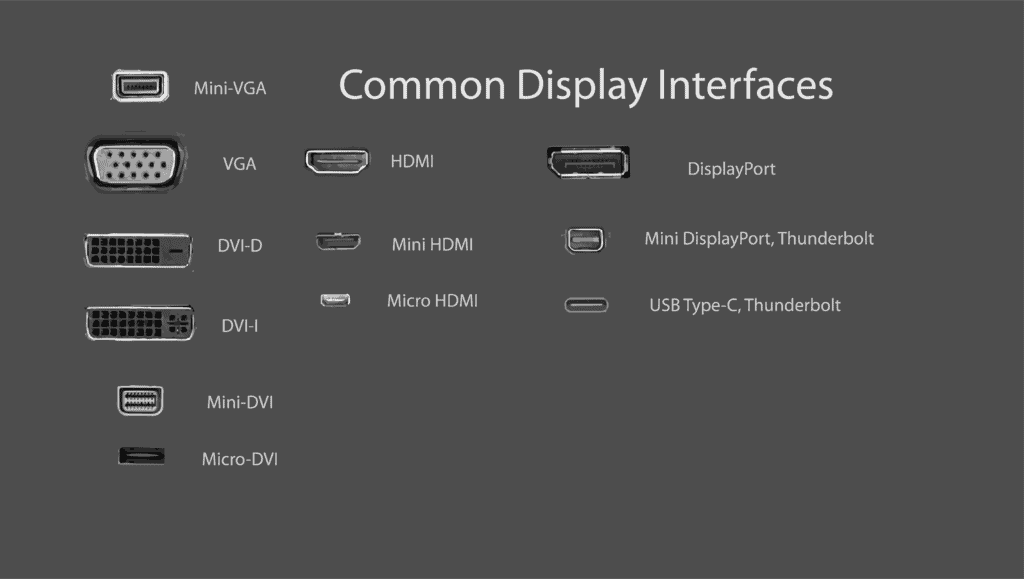Hot-plugging the HDMI cable from the monitor to the laptop used to work all the time, except when I blew up the monitor display once.
Much to my surprise, I managed to short-circuit the device due to constant hot plugging that had worn out the HDMI connector.
Although it is safe to hot-plug HDMI when the devices allow hot-plugging, sometimes it may encounter a problem from prior damage or when the connector has worn out.
Let us determine when hot-plugging HMDI cables are safe and how to do it properly to avoid unforeseen damage.
Table of Contents Show
What does HDMI Hot-Plug Mean?
“Hot-plugging” refers to plugging the HDMI cable into the HDMI port of the display (sink device) or output (source device) when both devices are still on, without physically damaging them.
Turning off the device each time you try to connect the HDMI, also known as cold plugging, would be cumbersome.
Hence, hot-plugging was introduced to prevent this problem and connect two devices without shutting them down or rebooting.

According to Point Clicker, “hot” essentially denotes that the HDMI socket is live during the plugging process.
Almost every device with HDMI capability supports hot-plugging nowadays because it is convenient and saves time.
How does HDMI Plug Detection Work?
Hot-plug detection would work when the active source device detects sink devices through a communication mechanism evoked by an HDMI connection.
It is a communication mechanism between a source and a sink device that informs the source device that it has been connected/disconnected from the sink device.
If you are wondering, hot-plugging is made possible by a single pin or pins in the connector, making contact that initiates the process.
On the other hand, the connection is fully established when the HDMI connector and port make a handshake (complete insertion).
Without the latter, the HDMI cable would not transfer video and audio interfaces to the sink device.
HDMI hot-plug detection relies on two different technologies: DDC and EDID.
| DDC | EDID |
|---|---|
| DDC stands for Display Data Channel. | EDID stands for Extended Display Identification Data. |
| It refers to both the protocol and physical path used by the source and displays to communicate. | It is information relayed by the display to describe its capabilities and requirements to the source device. |
| It is typically assigned to plug pin or pins and carries topology information along with EDID | It may contain the manufacturer's detail, serial number, max resolution, refresh rate, and color spaces. |
Is HDMI Hot-Plugging Bad?
Many devices allow hot-plugging because it is convenient.
Hence, it is not bad until it is done correctly and the HDMI cable or concerned ports have no structural issues.
Despite saying that, hot-pluggable is not a zero risk. Let us take a look at a few risks of HDMI hot plugging.
1. Electro Static Discharge (ESD)
ESD is one of the significant concerns with the hot-pluggable device because the HDMI cable carries some electrical discharge, 5 volts when connected.
A sudden or momentary flow of electric current could cause an electrical short, electrostatic discharge, or electrical spark.
An electrical spark inflicting on the device is inherently risky whenever you hot plug the HDMI.
The risk will tremendously increase when trying to hot-plug a non-hot-pluggable device; hence, you should check first whether the device allows hot-plugging.
You can prevent it by turning the sink device off when connecting the HDMI plug to the source device.
Otherwise, connect the HDMI plug before turning on the source and sink devices.
2. Unwanted Monitor Behavior
Some monitors may encounter unwanted behavior when you connect or reconnect the HDMI plug or when a monitor sleeps.
It transmits a signal indicating that it is powering down. The system’s video drivers or Operative System interpret it as the monitor is unplugged.
This causes the Operating System to rearrange desktop spaces and windows unpleasantly.
As a solution, you should always turn off the monitor before connecting it to the source device. Once the HDMI plug is in, you can turn on the monitor.
3. HDMI Connector Wears Out
One significant disadvantage of continuously hot-plugging HDMI cables is that the connector wears out afterward.
You would know this when the connector fails to establish the connection even after connecting and disconnecting the HDMI plug multiple times.
The electric discharge will damage the pin or pins of the connector, causing faulty connectors.
Hence, it would help to minimize frequent hot plugging to prevent the HDMI connector from wearing out.
Hot Plugging Vs. Hot Swapping
The two phrases, hot-plugging, and hot-swapping, are often used interchangeably. However, there are a few differences.
Hot-plugging indicates attaching a system component while the system is running.
On the other hand, hot-swapping refers to replacing the component while the system is running.
The latter is more useful when replacing a part when it breaks down, becomes faulty, or needs switching to maintain a running system.
Hot-swappable components may include network adapters, USB devices, external hard drives, hot-swappable keyboards,
For example: Replacing an external hard drive on a running system without cold plugging.
The hard drive is a traditionally cold-pluggable unit, but with the help of new technology, it can be hot-swapped without worrying about damaging the system or component.
Are There Any Hot-Plug Connections Other Than HDMI?
HDMI alone is not the only hot-pluggable connector. Today, almost every video/display port allows hot-plugging, similar to HDMI.
DisplayPort, VGA, DVI, and Thunderbolt all video ports are a few examples of hot-pluggable connections.

- VGA ports are quite old technology yet still common in many laptops and monitors; hence missing or outdated graphics card drivers can often cause VGA no signal issues.
- DVI-A (analog) is another digital visual interface that has been phased out because it only supports a max resolution of 1080p and is non-hot-pluggable.
- On the other hand, DVI-D (digital) and DVI-I are still in use and supported by hot-pluggable devices.
- DisplayPort is hot-swappable and is generally better than HDMI.
- Thunderbolt is a 24-pin USB-C type connector available in every latest device with hot-swappable ability.
They carry the same risk as an HDMI cable when it comes to hot-plugging in an incorrect manner; hence, remember to adopt safety while hot-plugging them.
Conclusion
Hot-plugging HDMI is an essential and in-handy feature because not many users know the difference between hot or cold plugging.
Although an inherent feature, HDMI hot-plugging may turn into trouble when not done correctly.
An HDMI plug will naturally wear out after a prolonged period, causing faulty connection and other problems.
Therefore, ensure to keep your devices and peripherals up to date by replacing them regularly.


